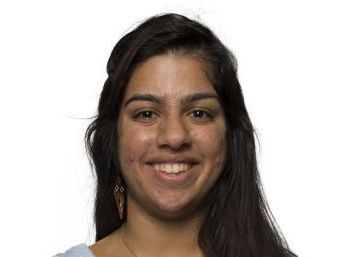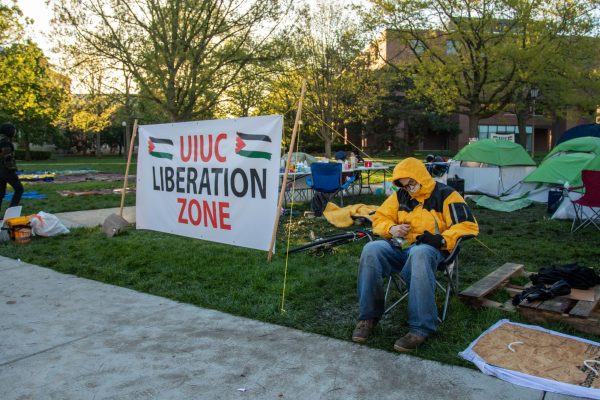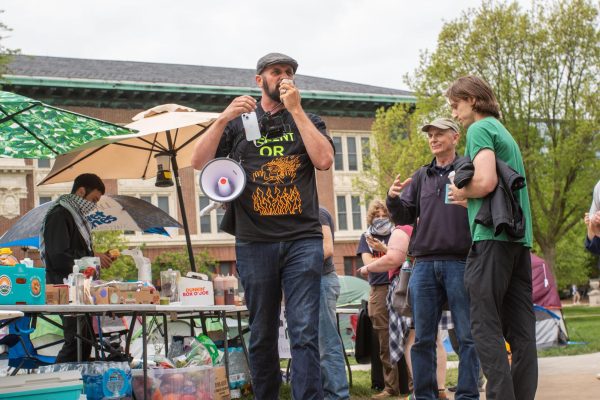I-Connect doesn’t connect with students

March 19, 2014
As I enter my I-Connect Diversity and Inclusion Workshop, which is mandatory for first-year students during their spring semester, I notice various signs put up on the wall of the classroom.
They read words such as “race,” “sexual orientation,” “religious beliefs” and many more.
We students awkwardly scatter to find seats, while we are occupied with our phones and talking to our peers until the discussion starts and we are asked to put all distractions away.
The University’s most recently required workshop, I-Connect, is important in opening our eyes to the diversity on campus but lacks in substance and a creative way to engage students.
If you’re going to throw 30 random strangers into a room on a Tuesday evening, then the point you’re trying to get across should at least leave an influential mark. Because of the way participation was forced and activities were structured, students’ comments on diversity and inclusion were not as substantial as they could have been.
Get The Daily Illini in your inbox!
The workshop started with the student facilitators reading off statements such as, “Which have you thought about most on campus,” in reference to the signs on the wall, and students then scampered toward the category they felt most apt. While this is an interesting icebreaker, the questions could be more efficient if they were initially not so personal.
Students, otherwise, seem to flock to the category they feel is most “socially-accepted,” because who wants to admit to a room full of their peers, who judge them, that they think most about their sexual orientation? Rather, these statements should be framed more generically, and not so personally, by being phrased as: “What do you think your peers have questioned the most while on campus?”
Especially because this is the first activity, it’ll suffice as an introduction into the topic of diversity. Later on in the program would be a better time to bring up more personal questions since the group will likely be more comfortable with the topic, and each other, and more apt to open up.
The discussion and situation-style setting that followed seemed almost obvious. We were numbered into groups where we were then given a scenario about a different diversity issue, and were asked how we would approach that particular issue. For instance, my group talked about a scenario in which our hypothetical friend was upset about being chemistry partners with an international student because they didn’t speak proper English. As a result, we were supposed to decide how we would address this topic with that friend and the international student and create conversation.
While these situations provided an outlet for us to think about such issues, which we may have not acknowledged existed on campus, it was another activity in which we would simply use common sense in order to appeal to our other peers.
Even if it’s unsaid, there is a morally correct answer on how to deal with your friend who doesn’t want to be chemistry partners with an international student — and that’s the method I-Connect students would use to answer the question. A morally correct way to approach this scenario would be to acknowledge that the international student may have a good understanding of chemistry and that your friend should attempt to communicate with them. However, realistically, most students probably would be extremely frustrated with the situation and attempt to do the project themselves — but my I-Connect group obviously wouldn’t say that as it is not a socially acceptable answer.
In real life, however, these hypothetical scenarios may not help students reflect on their actions because they are not personalized.
This workshop could be used to truly reach out to the diverse students on campus and have them share their experiences and feelings. This could be implemented by an anonymous comment box in which everyone in the group could write down how they have been discriminated against or have discriminated others. Then, a student leader or facilitator could read out the scenarios.
While it is more personal, it would enhance the experience by pushing us to be in the same room as real people who have experienced these things instead of just hypothetical people. Not to mention, these anonymous real-life examples would allow students to have a more honest discussion about diversity issues.
While these workshops are key in emphasizing and opening our eyes to certain issues, the way they are constructed could be modified to enhance everyone’s overall experience. After all, a personal touch goes a long way.
Simran is a freshman in Media. She can be reached at [email protected].






